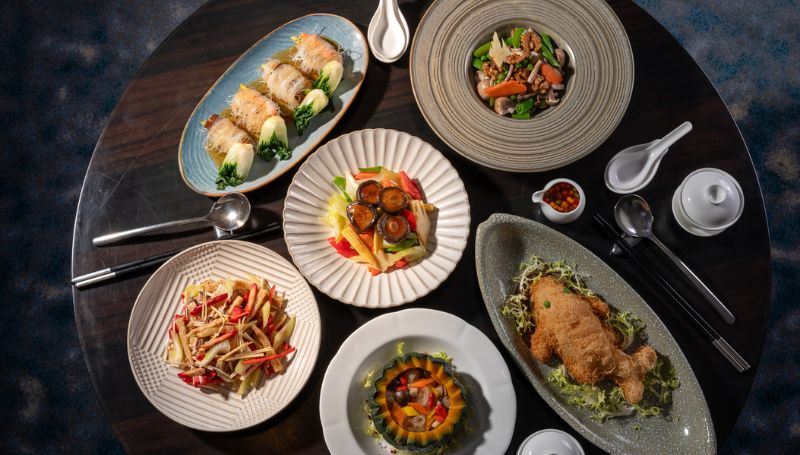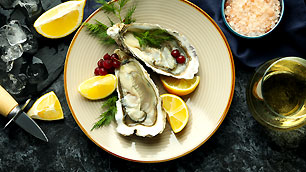Japanese Delights
Tempura
Tempura, a cherished staple of Japanese cuisine, is the ultimate crispy indulgence. Its gossamer-thin, golden crust encasing perfectly cooked ingredients has won over taste buds across the globe. Join us as we explore the intricacies of this iconic dish, from its rich history to expert techniques, complete with a foolproof recipe to bring authentic Japanese flavors to your home kitchen.
Chef's Notes:
- Tempura is a Japanese delicacy featuring ingredients coated in a light, crispy batter and deep-fried to perfection.
- Achieving the ideal tempura texture depends on the batter's consistency and proper frying techniques.
- To maintain its characteristic crunch, tempura should be served immediately after cooking on a wire rack.
A Brief History
The story of tempura begins in the 16th century when Portuguese missionaries introduced batter-frying to Japan. Embracing this novel cooking method, the Japanese refined it over generations, transforming it into the delicate, airy tempura we savor today.
The Perfect Tempura Batter
The heart of exceptional tempura lies in its ethereal batter. Unlike dense, bread-like coatings, tempura batter is whisper-light, allowing the natural flavors of the ingredients to take center stage.
Ingredients:
- 1 cup all-purpose flour
- 1 cup ice-cold water
- 1 large egg, thoroughly chilled
- 1 teaspoon baking powder
- A pinch of salt
The magic happens with ice-cold ingredients and minimal mixing, resulting in a delicate coating that transforms into a crispy marvel when fried.
Choosing Your Ingredients
Tempura's versatility shines through its ability to showcase a wide array of ingredients. Popular choices include:
- Shrimp (ebi)
- Sweet potato (satsumaimo)
- Eggplant (nasu)
- Green beans (ingen)
- Mushrooms (shiitake)
When selecting your tempura stars, prioritize freshness and quality. Prepare ingredients by cutting them into uniform pieces to ensure even cooking throughout.
The Frying Process
Mastering the art of tempura frying requires attention to detail and precision. Follow these steps for tempura perfection:
1. Heat oil to 350°F (175°C) in a deep pot or fryer.
2. Lightly coat ingredients in flour, then dip in batter.
3. Carefully lower battered items into the hot oil.
4. Fry until golden and crisp, approximately 2-3 minutes.
5. Remove and drain on a wire rack to maintain crispiness.
Pro tip: Keep oil temperature consistent between batches for uniform results.
Serving Suggestions
To fully appreciate tempura's signature crunch, serve it immediately after frying. Use a wire rack for serving to allow excess oil to drip away and prevent steam from softening the crispy exterior.
Classic accompaniments include:
- Tentsuyu (a light dipping sauce)
- Freshly grated daikon radish
- Wedges of lemon for a citrusy zing
Step-by-Step Recipe
Let's put our tempura knowledge into practice with this straightforward yet delectable recipe:
1. Wash and cut ingredients into appropriate sizes for even cooking.
2. Combine batter ingredients in a chilled bowl, stirring gently to avoid overmixing.
3. Heat oil in a deep pot until it reaches 350°F (175°C).
4. Dust ingredients lightly with flour before battering.
5. Dip floured items in batter and fry in small batches until golden and crisp.
6. Remove and let excess oil drain on a wire rack.
7. Serve immediately with dipping sauce and traditional garnishes.
Tempura Variations
While classic tempura is a treat in itself, innovative chefs have created exciting variations:
- Kakiage: A tempura medley of finely chopped vegetables and seafood.
- Tempura sushi rolls: Traditional sushi rolls are given a crispy tempura coating.
- Tempura ice cream: A dessert featuring ice cream wrapped in pound cake, battered and flash-fried.
Tips for Perfect Tempura
1. Maintain cold temperatures for ingredients and batter.
2. Embrace lumps in your batter; they're a sign of proper mixing.
3. Cook in small batches to keep the oil temperature stable.
4. Use a reliable thermometer to monitor oil heat accurately.
5. Prioritize immediate serving for the ultimate crispy experience.
Nutrition Facts
Nutrient amount per serving
-
- Calories: 250
- Total Fat: 14g
- Saturated Fat: 2g
- Cholesterol: 30mg
- Sodium: 180mg
- Total Carbohydrate: 25g
- Dietary Fiber: 1g
- Protein: 6g
Note: Nutritional values may vary depending on specific ingredients and preparation methods.
Health Considerations
While tempura is undoubtedly delicious, its deep-fried nature means it's typically high in calories and fat. Enjoy this crispy delight in moderation as part of a well-balanced diet. For a lighter twist, experiment with air-frying or baking tempura-inspired dishes.
Pairing Suggestions
Enhance your tempura experience with these complementary beverage pairings:
- A soothing cup of green tea
- A crisp, light Japanese beer
- A glass of chilled sake
These drinks harmonize with tempura's light, crispy texture without overwhelming its subtle flavors.
Cultural Significance
In Japan, tempura transcends mere food; it's a revered culinary art form. Dedicated tempura chefs spend years honing their craft to achieve perfection. Many upscale restaurants in Japan specialize exclusively in tempura, offering omakase-style dining experiences where the chef curates a menu based on the day's finest ingredients.
FAQs
What's the best oil for frying tempura?
Opt for neutral oils with high smoke points such as vegetable, canola, or peanut oil for tempura frying. Some chefs prefer a custom oil blend to achieve optimal flavor and crispiness.
Can I make tempura batter in advance?
For best results, prepare tempura batter just before frying. The cold temperature and minimal mixing are essential for achieving the characteristic light, crispy texture.
How do I keep tempura crispy?
Serve tempura immediately on a wire rack to preserve crispiness. If you need to hold it briefly, place it in a warm oven (200°F/95°C) on a wire rack, but serve as soon as possible.
Is tempura gluten-free?
Traditional tempura batter contains wheat flour and is not gluten-free. However, you can create gluten-free versions using rice flour or specialized gluten-free flour blends.
Can I reuse tempura frying oil?
Yes, tempura oil can be reused a few times. After each use, strain it carefully and store it in an airtight container. Discard the oil if it develops a rancid smell or appears dark and cloudy.





























 Gastronomy Cities
Gastronomy Cities
 Amazing Food
Amazing Food
 Chef's Talk
Chef's Talk